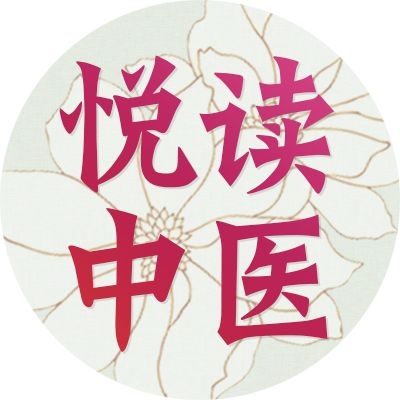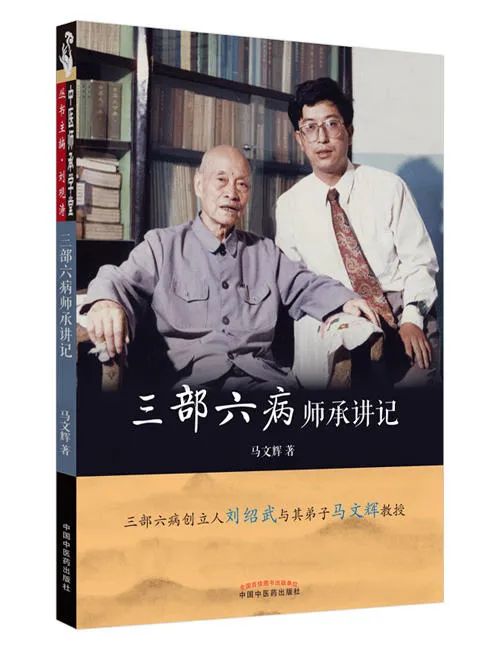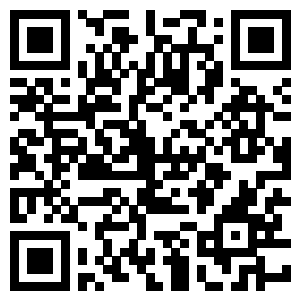 Daily TCM Insights at 11:30 AM
Daily TCM Insights at 11:30 AM
Authoritative and high-quality knowledge in Traditional Chinese Medicine
If you like it, please star it for me
Editor’s Introduction
Recently, we have been introducing the basic concepts and representative formulas of the “Three Parts and Six Diseases” school, which excels in comprehensive treatment. Since the basis for selecting a formula is the location of the disease, how do we determine where the disease is located? This requires the use of different pulse types to correspond accordingly. Today, I will guide you to learn about the four most distinctive pulse types in the “Three Parts and Six Diseases” theory, and how to understand the patient’s personality traits and the patterns of Qi and blood changes through these pulses.
Overall Qi and blood imbalance can be reflected through pulse types, which can form four pulses in the human body, namely Overflow Pulse (Yì Mài), Turbulent Pulse (Wěn Mài), Gathering Pulse (Jù Mài), and Covering Pulse (Fù Mài). These four pulses can appear individually or in combination. In the overall differentiation of Qi and blood, we use pulse types as an entry point to reflect four types of temperament, observe four personality traits, and reflect the pathological changes in the circulation of Qi and blood in the body. Therefore, these four pulses are the main basis for diagnosing overall Qi and blood changes in the “Three Parts and Six Diseases” framework.
The four pulses correspond to the four cavities, namely Overflow Pulse (Yì Mài) – Cranial Cavity, Turbulent Pulse (Wěn Mài) – Thoracic Cavity, Gathering Pulse (Jù Mài) – Abdominal Cavity, Covering Pulse (Fù Mài) – Pelvic Cavity. Thus, the differentiation of the four pulses is also referred to as “Four Cavity Differentiation”. The four pulses are also associated with a person’s temperament types and personality traits, forming four pathological changes and four states of functional disorder related to Qi stagnation and blood dysfunction.

 1. Overflow Pulse (Yì Mài)When there is a reversal of Qi and blood in the body, if Qi rises upwards, it manifests as the Overflow Pulse at the cun (寸) position, also known as the Overflow Pulse.The pulse extends beyond the cun position, reaching the wrist crease or even the upper fish mound. In mild cases, it can be felt as a bounding pulse, sometimes visible in its pulsation. The “Nanjing – Three Difficulties” records that “the pulse rises to the fish mound, indicating an external barrier and internal obstruction, this is the pulse of Yin overpowering Yang.” The “Lingshu – Pulse Measurement” also states: “If Yin Qi is too strong, Yang Qi cannot nourish, hence it is called barrier; if Yang Qi is too strong, Yin Qi cannot nourish, hence it is called obstruction; if both Yin and Yang are strong and cannot nourish each other, it is called barrier obstruction.” Therefore, the fish mound pulse is an external barrier and internal obstruction, with Yin overpowering Yang, clearly referred to as Overflow in the “Nanjing”.
1. Overflow Pulse (Yì Mài)When there is a reversal of Qi and blood in the body, if Qi rises upwards, it manifests as the Overflow Pulse at the cun (寸) position, also known as the Overflow Pulse.The pulse extends beyond the cun position, reaching the wrist crease or even the upper fish mound. In mild cases, it can be felt as a bounding pulse, sometimes visible in its pulsation. The “Nanjing – Three Difficulties” records that “the pulse rises to the fish mound, indicating an external barrier and internal obstruction, this is the pulse of Yin overpowering Yang.” The “Lingshu – Pulse Measurement” also states: “If Yin Qi is too strong, Yang Qi cannot nourish, hence it is called barrier; if Yang Qi is too strong, Yin Qi cannot nourish, hence it is called obstruction; if both Yin and Yang are strong and cannot nourish each other, it is called barrier obstruction.” Therefore, the fish mound pulse is an external barrier and internal obstruction, with Yin overpowering Yang, clearly referred to as Overflow in the “Nanjing”.
In the Qing Dynasty, Feng Zhaozhang noted in the “Secret Record of the Brocade Bag – Pulse Techniques”: “The pulse rises at the fish mound. Many people have this pulse, but it cannot be generalized; some have it in both hands, while others have it in one hand. If a healthy person has this pulse, it indicates a rich constitution, and they will live long. If a person who usually does not have this pulse suddenly develops it, it indicates a pathological condition.” The Qing Dynasty’s Chen Xiuyuan also recorded in the “Outline of Twenty-Eight Pulses”: “If a widowed or lonely person has a pulse that is strong and rises at the fish mound, it indicates emotional distress rather than an evil pulse.”
In the Qing Dynasty, Wu Daoyuan recorded in the “Essential Points of Women’s Medicine – Regulation of Menstruation”: “If the face is yellow and thin with internal heat, it is called childhood tuberculosis. Diagnosing the liver pulse, it is stringy and rises at the cun position, which cannot be treated with medicine; it is urgent to marry, then Yin and Yang will harmonize, and the condition will naturally resolve; otherwise, the chances of survival are slim.” The literary work “Jin Ping Mei” also records the Overflow Pulse (上鱼际脉), stating in the eighteenth chapter: “The imperial physician Jiang Zhushan diagnosed Li Ping’er, saying that the student diagnosed the source of the illness, the liver pulse is stringy, rising at the cun position and large, indicating the six desires and seven emotions are the cause.”
Through long-term clinical observation and literature research, we find that the Overflow Pulse is indeed the fish mound pulse, indicating a hyperactive liver Yang, often accompanied by sympathetic nervous system excitement, suggesting a positive pathological response.Patients with Overflow Pulse are generally irritable, quick-tempered, strong-willed, prone to insomnia and vivid dreams, memory decline, dizziness, and tinnitus, falling under the category of hyperactive liver Yang, indicating a strong personality and quick temper. They tend to suppress their nature, using rationality to control their impulses. Over time, this leads to dysfunction of the cerebral cortex, autonomic nervous system disorder, and sympathetic nervous system excitement, causing blood vessels to constrict. Eventually, the pulse at the cun position moves upwards, protruding above the wrist crease, even reaching the size of the fish mound at the thumb. This pulse syndrome generally manifests within the cranial cavity, and its personality traits are related to temperament types, which we can vividly refer to as “Wang Xifeng Pulse”.
Lecture Notes from the Direct Disciple of the Founder of the “Three Parts and Six Diseases” School——

 2. Turbulent Pulse (Wěn Mài)Also known as the Hesitant Pulse, it is characterized by difficulty in movement, irregular rhythm, varying speeds, and varying strengths, which we refer to as the Three Unequal Pulses. The Turbulent Pulse generally indicates poor blood circulation and is an early diagnosis of cardiac dysfunction.Individuals with Turbulent Pulse typically adopt a good-natured approach towards others while being self-restrained and suppressive, often choosing not to speak. This long-term self-restraint and suppression can lead to vagus nerve excitement, ultimately affecting the sinoatrial node, causing irregular or chaotic sinus rhythm, resulting in Turbulent Pulse. Patients with Turbulent Pulse often experience symptoms such as anxiety, palpitations, chest tightness, dizziness, weakness, and lower limb edema, indicating reduced cardiac function and effective blood volume. Those with this pulse generally maintain a long-term self-restrained and suppressive attitude, leading to dysfunction of the cerebral cortex, disrupting the heart’s conduction system, affecting myocardial contractility and conduction speed, resulting in the irregular, varying strength of the Three Unequal Pulses at the cun position. The Turbulent Pulse reflects cardiac dysfunction, with the pathological site located in the thoracic cavity, which we can also refer to as “Xue Baochai Pulse”.
2. Turbulent Pulse (Wěn Mài)Also known as the Hesitant Pulse, it is characterized by difficulty in movement, irregular rhythm, varying speeds, and varying strengths, which we refer to as the Three Unequal Pulses. The Turbulent Pulse generally indicates poor blood circulation and is an early diagnosis of cardiac dysfunction.Individuals with Turbulent Pulse typically adopt a good-natured approach towards others while being self-restrained and suppressive, often choosing not to speak. This long-term self-restraint and suppression can lead to vagus nerve excitement, ultimately affecting the sinoatrial node, causing irregular or chaotic sinus rhythm, resulting in Turbulent Pulse. Patients with Turbulent Pulse often experience symptoms such as anxiety, palpitations, chest tightness, dizziness, weakness, and lower limb edema, indicating reduced cardiac function and effective blood volume. Those with this pulse generally maintain a long-term self-restrained and suppressive attitude, leading to dysfunction of the cerebral cortex, disrupting the heart’s conduction system, affecting myocardial contractility and conduction speed, resulting in the irregular, varying strength of the Three Unequal Pulses at the cun position. The Turbulent Pulse reflects cardiac dysfunction, with the pathological site located in the thoracic cavity, which we can also refer to as “Xue Baochai Pulse”.

 3. Gathering Pulse (Jù Mài)
3. Gathering Pulse (Jù Mài)
Also known as the Gathering Barrier Pulse, it is characterized by a prominent pulse at the barrier area, with weak and indistinct cun and chi pulses, appearing significantly or severely, resembling beans, apricot kernels, or coiled earthworms, elevated above the skin. Sometimes, we can see the pulse at the barrier area without even palpating it, indicating Qi stagnation as a pathological change.Li Zhongzi described it as “low and heavy at both ends, with a prominent middle.” The “Three Parts and Six Diseases” refers to it as the Gathering Barrier Pulse. Ancient texts also noted this phenomenon, as recorded in the “Suwen – Pulse Essentials”: “If the pulse is short, it indicates Qi disease,” meaning that both cun and chi pulses are weak while the barrier pulse is prominent, suggesting liver Qi stagnation and pathological changes.
The “Pulse Theory” also records: “Those who are overly sorrowful often have short pulses, which can indicate Qi disease.” When this pulse appears, symptoms such as chest and rib fullness, palpitations, and shortness of breath may occur. Patients with this pulse are often suspicious, prone to sighing, experiencing fullness in the chest and ribs, and hardness below the heart, falling under the category of liver Qi stagnation. Those with Gathering Pulse generally have an introverted personality, are suppressive, and taciturn, often unable to express their thoughts or feelings, leading to repetitive thinking and an inability to articulate their thoughts. I often say that these individuals tend to get stuck in their own thoughts and are quite sensitive, which I refer to as “Lin Daiyu Pulse”. Over time, this can lead to sympathetic nervous system inhibition and vagus nerve excitement, presenting a suppressive syndrome.
Long-term vagus nerve excitement can cause longitudinal contraction and transverse expansion of blood vessels, leading to a gathering and enlargement at the barrier area, sometimes resembling a bean or peanut shape. Clinically, this is very common, and some refer to it as Stagnation Pulse, indicating liver Qi stagnation and liver Qi blockage. This pulse primarily reflects pathological changes in the abdominal cavity, particularly in the upper abdomen, diaphragm, liver, gallbladder, spleen, and pancreas. Liver Qi stagnation and blockage are primarily manifested as abdominal symptoms.
Detailed Analysis of the “Three Parts and Six Diseases” School’s “Coordinated Therapy”——

 4. Covering Pulse (Fù Mài)Also known as the Long String Pulse, it is characterized by a long and thin pulse that can extend beyond the chi position, continuing for several inches.The “Nanjing” records: “If it enters the chi position, it is the Covering Pulse, indicating internal barrier and external obstruction, this is the pulse of Yang overpowering Yin.”Patients with Covering Pulse generally exhibit symptoms such as abdominal fullness, bowel sounds, diarrhea, abdominal pain, poor appetite, digestive issues, skin pallor, sexual dysfunction, and in women, may have clear and thin vaginal discharge, or experience conditions like hernia, cold dampness accumulation, and phlegm stagnation in the lower abdomen, particularly in the pelvic area.Individuals with this pulse often display personality traits of stubbornness, often due to vagus nerve excitement or a habitual preference for cold and greasy foods, leading to excessive mucus accumulation in the intestines, especially in the ascending colon, which we refer to as “Miaoyu Pulse”.
4. Covering Pulse (Fù Mài)Also known as the Long String Pulse, it is characterized by a long and thin pulse that can extend beyond the chi position, continuing for several inches.The “Nanjing” records: “If it enters the chi position, it is the Covering Pulse, indicating internal barrier and external obstruction, this is the pulse of Yang overpowering Yin.”Patients with Covering Pulse generally exhibit symptoms such as abdominal fullness, bowel sounds, diarrhea, abdominal pain, poor appetite, digestive issues, skin pallor, sexual dysfunction, and in women, may have clear and thin vaginal discharge, or experience conditions like hernia, cold dampness accumulation, and phlegm stagnation in the lower abdomen, particularly in the pelvic area.Individuals with this pulse often display personality traits of stubbornness, often due to vagus nerve excitement or a habitual preference for cold and greasy foods, leading to excessive mucus accumulation in the intestines, especially in the ascending colon, which we refer to as “Miaoyu Pulse”.
The human gastrointestinal tract operates from the mouth to the anus, generally following a downward movement, except for the ascending colon, which moves upward against gravity. In this area, mucus can easily accumulate, and if not expelled properly, it can lead to what is known as phlegm-damp syndrome, often resulting in abdominal rumbling sounds. Mucus retention can be absorbed into the bloodstream, gradually depositing in the blood vessel walls over the years, causing thickening and hardening of the vessels, resulting in this long and stringy pulse; if it stagnates in the lower jiao, men may develop prostatitis, and women may experience pelvic inflammatory disease, primarily reflecting pathological manifestations of deficiency and cold in the lower jiao.

 Clinical Practice Lecture Notes
Clinical Practice Lecture Notes
The “Three Parts and Six Diseases” medical school was founded by Mr. Liu Shaowu from Shanxi. The theory divides the human body into three parts: the exterior, the pivot (half exterior and half interior), and the interior, referred to as the “Three Parts”; each part has diseases categorized into six types based on their Yang (excess, heat) and Yin (deficiency, cold) characteristics, referred to as the Six Diseases.


“Lecture Notes on the Inheritance of the Three Parts and Six Diseases”
Click the cover to purchase this book from the Yuyijia TCM Academy
Scan to read the e-book for free
This book is a complete record of the lectures on the inheritance of the Three Parts and Six Diseases by Professor Ma Wenhui, Director of the Rheumatology and Immunology Department at the Shanxi University of Traditional Chinese Medicine. Professor Ma has been involved with the Three Parts and Six Diseases since 1984, forming a complete and practical application system. This book vividly narrates the process of Liu Shaowu’s founding of the Three Parts and Six Diseases, explaining the “systematic differentiation” and the twelve single syndromes, combined syndromes, and the “coordinated therapy” for treating both systemic and localized diseases.Previous Highlights
Five ancient formulas for resolving dampness and turbidity, effective for treating gastritis
Shan Yutang’s unique “142530” rule solves the issue of opening acupoints
Never thought that the Baizhong Yiqi Decoction could be effective for tumor heat
 Copyright StatementThis article is excerpted from “Lecture Notes on the Inheritance of the Three Parts and Six Diseases” (published by China Traditional Chinese Medicine Press, authored by Ma Wenhui), with all rights reserved by the original author. It is recommended and published by Yue Du Zhong Yi (WeChat ID: ydzhongyi). The cover image is sourced from Shetu Network, with copyright belonging to the original author. If there is any infringement, please contact for deletion. Unauthorized reproduction is prohibited!
Copyright StatementThis article is excerpted from “Lecture Notes on the Inheritance of the Three Parts and Six Diseases” (published by China Traditional Chinese Medicine Press, authored by Ma Wenhui), with all rights reserved by the original author. It is recommended and published by Yue Du Zhong Yi (WeChat ID: ydzhongyi). The cover image is sourced from Shetu Network, with copyright belonging to the original author. If there is any infringement, please contact for deletion. Unauthorized reproduction is prohibited!

 Click“Read the Original”to purchase this recommended bookGood articles must be “looked at”
Click“Read the Original”to purchase this recommended bookGood articles must be “looked at”

